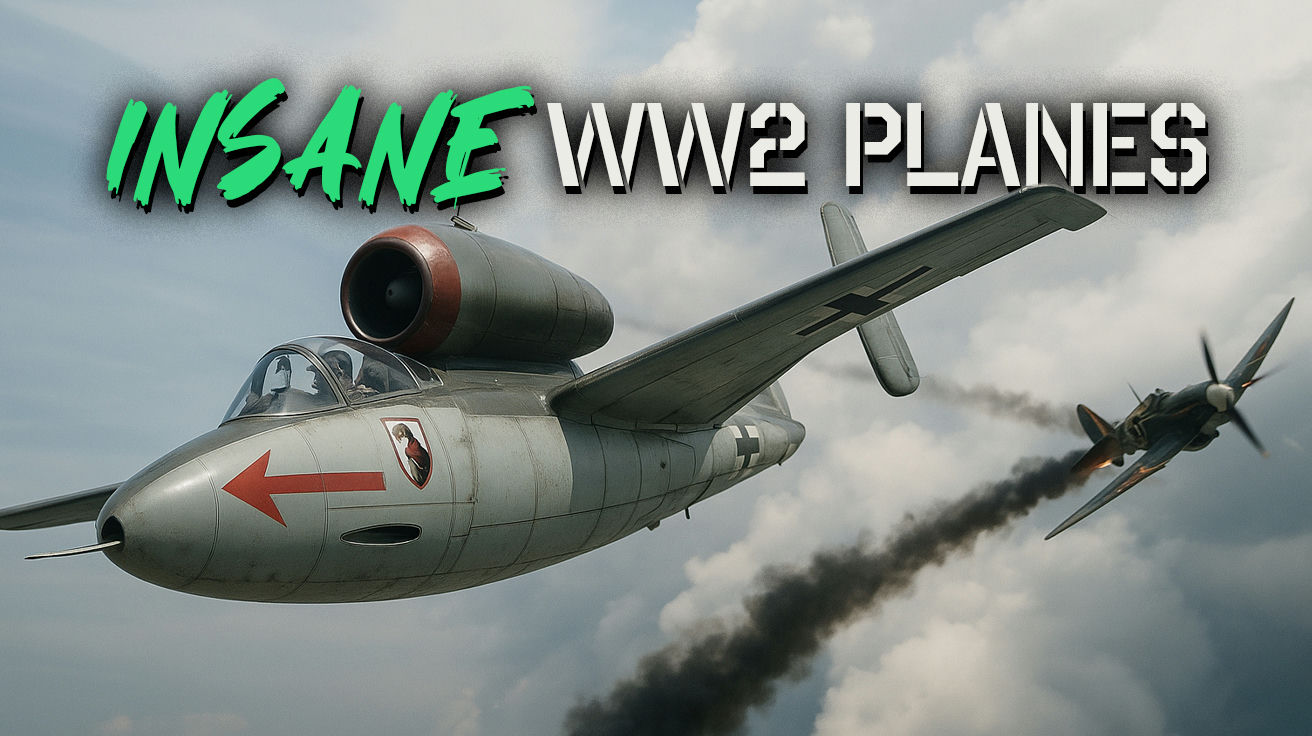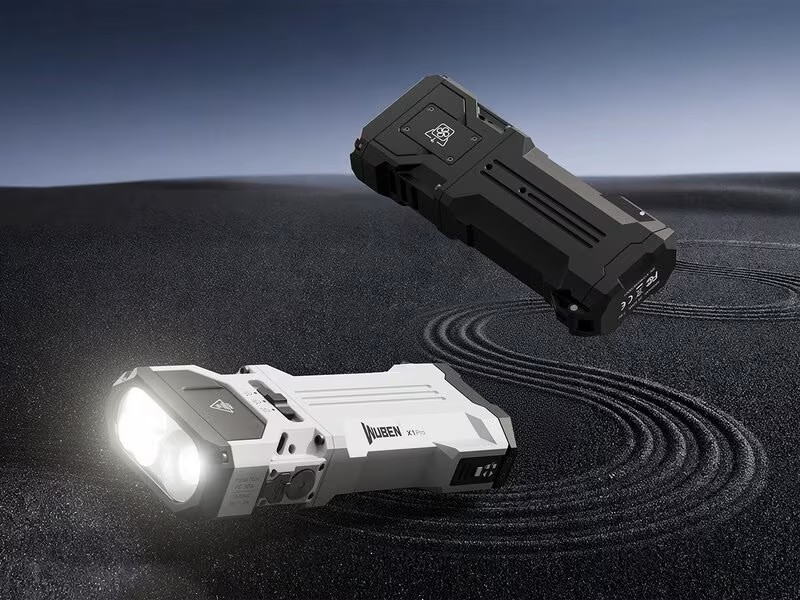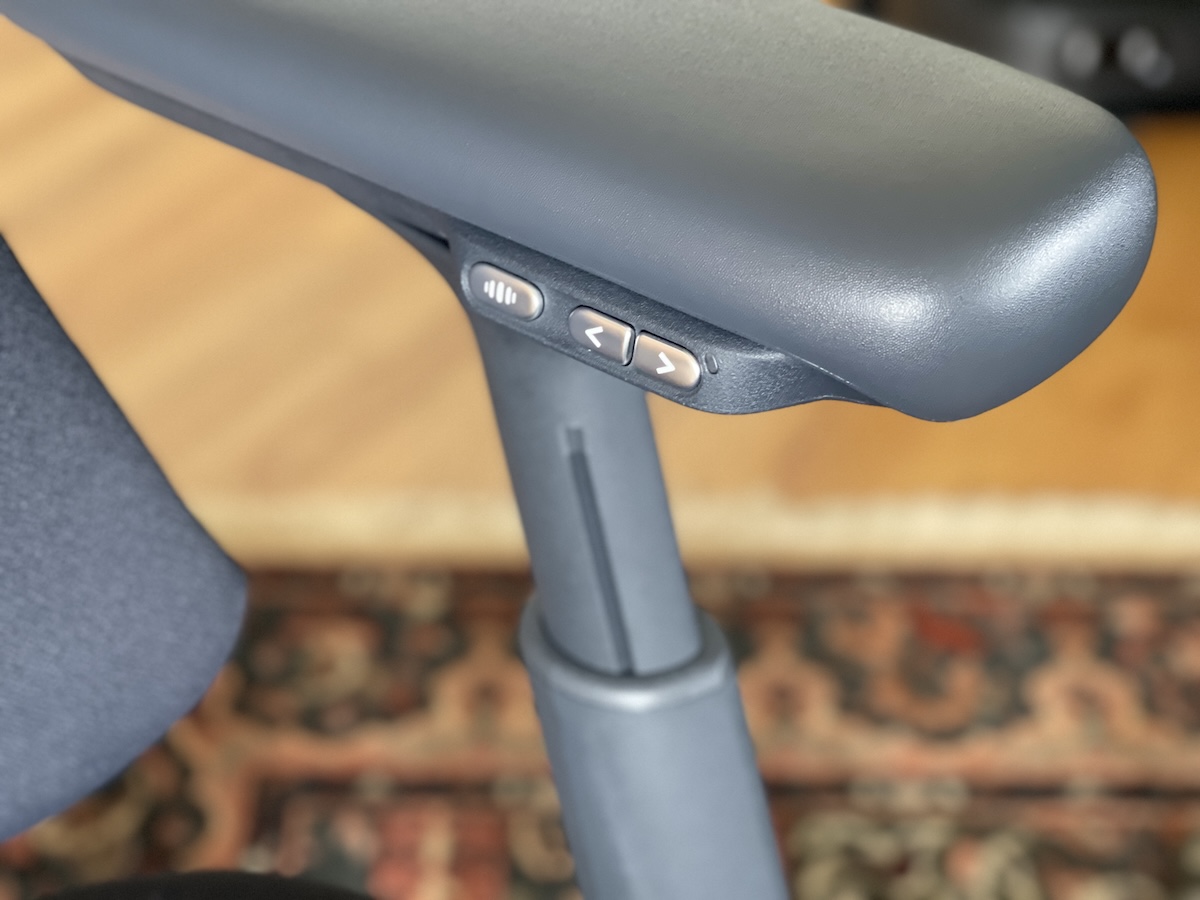World War II wasn’t just a global conflict—it was essentially a high-stakes tech competition with wings. Engineers working around the clock created some truly bizarre flying machines that would make Tony Stark raise an eyebrow. From coal-powered jets to flying pancakes, these aviation oddities pushed the boundaries of what could technically be called “an airplane.”
Most of these experimental aircraft vanished faster than your battery life on 10% with location services running. But their legacy lives on in the DNA of modern aviation, like finding an old Nokia in your drawer that somehow influenced your iPhone.
20. Lippisch P.13a

When fuel shortages hit Nazi Germany harder than a streaming service buffering at the climax of a movie, engineers got creative. The Lippisch P.13a used a rotating basket spinning at 60 rpm that spun coal granules into its ramjet engine—essentially a flying BBQ grill that could potentially break Mach 2 speeds. No kidding.
Its leaf-shaped delta wing design proved so aerodynamically sound that American engineers borrowed the homework after the war. The concepts behind this never-completed aircraft eventually influenced everything from the Concorde to modern supersonic jets. Talk about lighting a fire under innovation.
19. Blohm & Voss BV 141

Imagine if someone designed a plane after watching too many Picasso documentaries. The BV 141 looks like someone cut-and-pasted different aircraft parts with zero concern for symmetry—like wearing mismatched shoes but making it fashion. The crew sat in a glass bubble on the right while the engine and tail hung out on the left.
What’s truly wild? Test pilots reported it flew beautifully despite looking like a glitch in a flight simulator. The German Air Ministry still passed on it, but captured examples became the aeronautical equivalent of viral TikTok content among Allied engineers who couldn’t believe something so wrong could fly so right.
18. Focke-Wulf Triebflügel

The Triebflügel was the aviation equivalent of that experimental fusion restaurant that combines foods that have no business sharing a plate. This vertical takeoff interceptor had ramjet engines attached directly to rotating blades—basically a helicopter and a jet having an identity crisis together.
The pilot faced upward during vertical flight, creating an experience similar to being strapped to a ceiling fan while trying to operate complex machinery. While it never made it past wind tunnel testing, its radical approach to getting airborne without runways remains the inspiration for modern VTOL craft—just with fewer nightmarish control issues.
17. Blohm & Voss P.194

When one successful weird plane just wasn’t enough, Blohm & Voss doubled down with the P.194 tactical bomber. This asymmetrical oddity packed its nose with enough guns to make a first-person shooter protagonist jealous, all while maintaining an off-center design that seemingly defied basic physics and aesthetic sensibilities alike.
Reaching speeds of 775 km/h with a 1,070 km range wasn’t too shabby for 1944—about as impressive as getting decent Wi-Fi in a concrete bunker. Despite its promising stats, German officials chose the Me 262 instead, relegating this oddball to the “interesting but no thanks” file of aviation history.
16. Fiat G.55 Centauro

When people think “Italian fighters,” most minds go to pasta and Ferrari—not the sleek G.55 Centauro. Unlike its countrymen’s preference for radial engines (the aviation equivalent of choosing chunky over smooth peanut butter), the G.55 went with a streamlined inline Daimler-Benz powerplant that helped it soar above 8,000 meters.
The Centauro packed a punch with its 20mm cannons and machine guns, making it one of the finest Axis fighters nobody remembers. It’s like finding out that incredible underground band you discovered was actually topping charts in another country the whole time. After Italy’s 1943 armistice, these impressive machines served the Italian Social Republic—making them both technically advanced and politically complicated.
15. Boulton Paul Defiant

The Defiant represents that moment when someone has an idea that sounds brilliant on paper but falls apart faster than wet cardboard in practice. British designers basically said, “What if we removed all forward-firing guns and put them in a rotating turret instead?” In a stunning plot twist that surprised approximately no one except its creators, this proved problematic.
Initially effective against bomber formations, the Defiant became aviation’s equivalent of bringing a spork to a knife fight when facing fighters that could exploit its glaring blind spots. Rather than scrapping it, the RAF pivoted harder than a startup after losing funding, repurposing it as a night fighter with radar. This aircraft teaches the timeless lesson that adaptation often beats perfection—especially during wartime.
14. Junkers Ju 322 Mammut

The Mammut was essentially what happens when someone says “make it bigger” without considering the consequences—similar to supersizing a meal when you’re already full. With a wingspan exceeding 200 feet constructed primarily from wood, this massive glider aimed to airlift tanks directly to the battlefield, which is about as sensible as trying to deliver a refrigerator via drone.
Testing revealed what physics could have predicted: massive wooden wings tend to flex unpredictably when stressed. After building just two prototypes that handled with all the grace of a falling piano, the project got shelved faster than a bad idea at a board meeting. The Mammut stands as a monument to the fact that sometimes bigger isn’t better—it’s just bigger and more likely to crash.
13. Kyushu J7W Shinden

The Shinden flipped the conventional aircraft layout like a reverse UNO card, placing wings at the rear and horizontal stabilizers up front. This canard configuration looks so wrong it feels right—similar to pineapple on pizza for aviation enthusiasts. With four 30mm cannons, it packed enough firepower to turn B-29 bombers into expensive confetti.
Only two prototypes emerged before Japan’s surrender sent this innovative design to aviation’s “what if” file. One example survives at the Smithsonian, where visitors regularly do double-takes at its backward configuration. Modern canard designs found in aircraft like the Eurofighter Typhoon prove the Shinden was simply decades ahead of its time—not unlike those early smartphone prototypes that everyone laughed at until they became standard.
12. Sukhoi Su-6

When the Eastern Front desperately needed ground attack aircraft, the Sukhoi Su-6 stepped up like an overqualified job applicant. This heavily-armored single-seater mounted twin 23mm cannons that could ruin a tank’s day faster than dropping your phone in water ruins yours. Despite outperforming the Il-2 in testing, it never got its moment in the spotlight.
Engine shortages forced Soviet leadership to prioritize the established Il-2 production—a classic case of “we don’t have time to switch to something better.” The Su-6’s story resembles that forgotten app update that fixed all the bugs but never got downloaded. Later evolved into an experimental interceptor before a rocket engine explosion ended development, proving that even in aviation, timing and resources matter more than superior performance.
11. Lockheed XP-58 Chain Lightning

The XP-58 suffered from the aeronautical equivalent of changing your outfit five times before leaving the house. Starting life as a beefed-up P-38 Lightning, this long-range fighter kept switching engines, weapons, and mission profiles faster than someone editing their dating profile after bad feedback.
Despite its first test flight in 1944, persistent engine problems plagued development like subscription fees you forgot to cancel. Eventually repurposed for reconnaissance missions, the project fizzled out after two prototypes. The Chain Lightning stands as an object lesson in feature creep—sometimes adding more stuff just creates more problems, whether you’re designing aircraft or smartphone apps.
10. Douglas XB-42 Mixmaster

Named like a kitchen appliance but engineered like the future, the Mixmaster represented aviation’s awkward transition phase between propellers and jets—similar to that period when phones had both touchscreens and physical keyboards. By housing two V12 engines inside the fuselage powering rear-mounted contra-rotating propellers, Douglas created an aerodynamically clean airframe years ahead of its contemporaries.
Despite briefly setting a speed record in 1945, the Mixmaster suffered from vibration issues that made using it about as pleasant as listening to music on speakers with blown bass. The rapid advancement of pure jet technology rendered its clever propulsion system obsolete almost overnight, demonstrating how quickly innovation can make even brilliant ideas seem quaint—just ask anyone who invested heavily in 3D TVs.
9. Messerschmitt Me 262 Schwalbe

The Me 262 crashed into aerial combat like a smartphone at a flip-phone convention. As the first operational jet fighter, it outpaced Allied fighters by over 100 mph advantage—similar to comparing fiber internet to dial-up. Conceptualized in 1939 but not operational until mid-1944, it represents one of history’s most disruptive technological leaps.
Despite Hitler’s misguided insistence on using it as a bomber, Me 262 pilots claimed 542 Allied aircraft destroyed. Its swept wings and dual-engine configuration established design principles that influenced military aircraft for decades, much like how the iPhone’s basic form factor still shapes smartphones today. The Me 262 didn’t just participate in WWII—it essentially previewed the next era of aviation while everyone else was still living in the present.
8. Arado Ar 234 Blitz

While jet fighters get all the attention (much like flagship smartphones overshadowing tablets), the Arado Ar 234 Blitz quietly revolutionized bombing and reconnaissance as the world’s first jet bomber. Conceived in 1940, this aeronautical trendsetter carried 1,500 kg bombs while moving fast enough to make interception nearly impossible—the equivalent of bringing next-gen tech to a current-gen fight.
The Ar 234 conducted reconnaissance over Britain in 1944, capturing high-resolution images while casually avoiding interception. Though only 210 were built before Germany surrendered, this aircraft demonstrated how jet propulsion could transform multiple mission profiles. Its influence on postwar bomber development parallels how Tesla’s innovations pushed the entire automotive industry toward electrification—sometimes the real revolution happens when new technology expands beyond its original niche.
7. Heinkel He 162 Volksjäger

Born from Germany’s Emergency Fighter Program, the He 162 was the aviation equivalent of that last-minute project you pull together with whatever materials you can find. Constructed primarily from wood due to metal shortages, this single-engine jet featured a top-mounted engine that made maintenance easier than accessing cloud storage.
The He 162 boasted the first operational ejection seat in history—a necessary feature considering its handling characteristics resembled those of a shopping cart with a bad wheel. With fuel capacity allowing only 20 minutes of flight time (worse than early smartwatch battery life), approximately 120 reached frontline units too late to matter. Despite its limitations, the He 162 represents an impressive engineering achievement under extreme constraints—similar to developing a successful app on a shoestring budget. You can also read about the 15 coolest amphibious planes.
6. Gloster Meteor

While Germany gets credit for the first operational jet fighter, Britain’s Gloster Meteor wasn’t far behind—similar to how Android followed iOS but still captured significant market share. Evolving rapidly from prototype to operational status between 1942 and 1944, the Meteor gave RAF pilots their first taste of jet-powered flight without the political baggage of captured enemy technology.
With over 3,800 produced and service in 30 different air forces, the Meteor became the Toyota Corolla of early jets—reliable, widely available, and instrumental in democratizing new technology. Its role in intercepting V-1 flying bombs demonstrated practical applications for jet technology beyond pure speed records. The Meteor’s evolutionary rather than revolutionary approach to jet fighter design proved that sometimes being second but more reliable wins the long game.
5. Nakajima Kikka

When Japan needed a jet fighter fast, they went with the tech equivalent of “I’ll copy your homework but change it a bit so it’s not obvious.” After examining intelligence reports about Germany’s Me 262, Japanese engineers fast-tracked their own version—the Kikka—which became Japan’s only jet to make an unassisted takeoff during WWII.
Engineers Kazuo Ono and Kenichi Matsumura delivered an aircraft capable of 432 mph top speed with a 127-mile combat radius—specs tailored for intercepting American B-29 bombers. The war ended before the Kikka could enter service, leaving us with one of history’s great technological “what-ifs.” Had the Pacific War continued into 1946, American bomber crews might have faced jet interceptors from both theaters—a sobering reminder of how technology transfer can rapidly shift battlefield dynamics.
4. Horten Ho 229

Before stealth technology became a military buzzword, the Horten brothers accidentally created the aviation equivalent of incognito mode. Their Ho 229 flying wing jet bomber featured no vertical surfaces and used charcoal-infused adhesives that, as modern analysis suggests, reduced radar signature—like accidentally turning on airplane mode but still getting texts.
The Luftwaffe invested half a million Reichsmarks in this radical design, which combined jet propulsion with a flying wing configuration decades before the B-2 Spirit made it cool. The sole powered prototype crashed after several test flights, ending development prematurely. Had engineers overcome the inherent stability challenges, the Ho 229 might have introduced stealth warfare 40 years early—a technological leap comparable to skipping from VHS directly to streaming services.
3. Messerschmitt P.1101

The P.1101 introduced the aviation equivalent of adjustable smartphone keyboards with its variable-sweep wing technology. While modern swing-wing fighters adjust their wings mid-flight, this experimental jet featured manually adjustable wings that could be set at different angles between missions—like changing your device settings before, not during, each use.
Development began as Germany faced imminent defeat, with the prototype nearly complete by spring 1945. American forces captured it after the war, with Bell Aircraft studying it extensively to create the X-5 research aircraft. This direct technology transfer eventually led to iconic swing-wing fighters like the F-14 Tomcat (of “Top Gun” fame). The P.1101 shows how even unfinished innovations can become technological bridges between eras—much like how abandoned Google projects sometimes resurrect as features in other products.
2. Heinkel He 280

The He 280 stands as aviation’s greatest “almost famous” story—like a brilliant app that never made it past beta testing despite having features everybody would later copy. Designed by Heinkel in 1939, this aircraft represented the world’s first purpose-built jet fighter prototype, beating the Me 262 to the punch but losing the race to production.
Featuring revolutionary touches like tricycle landing gear and an ejection seat, the He 280 demonstrated significant speed advantages over conventional fighters in comparative tests. However, persistent engine problems and lack of government support left it grounded. Had German officials backed this project instead of the Me 262, jet fighters might have appeared years earlier—a reminder that sometimes the best technology doesn’t win, much like how VHS beat the superior Betamax format back in the day.
1. Sack AS-6

The Sack AS-6 looks like what happens when someone describes an airplane over the phone to someone who’s never seen one. Beginning development in 1938, this experimental craft featured a perfectly circular wing that resembles a flying dinner plate more than an actual aircraft—the aviation equivalent of those weird concept phones that never make it to market.
Despite interest from Luftwaffe official Ernst Udet, flight testing revealed devastating performance problems that made the DMV seem efficient by comparison. The aircraft stubbornly refused to leave the ground despite multiple modifications, including a redesigned tail and improved brakes. The AS-6’s spectacular failure demonstrates the enormous gap between theoretical innovation and practical application—a lesson that countless tech startups have learned the hard way after burning through their venture capital.





























